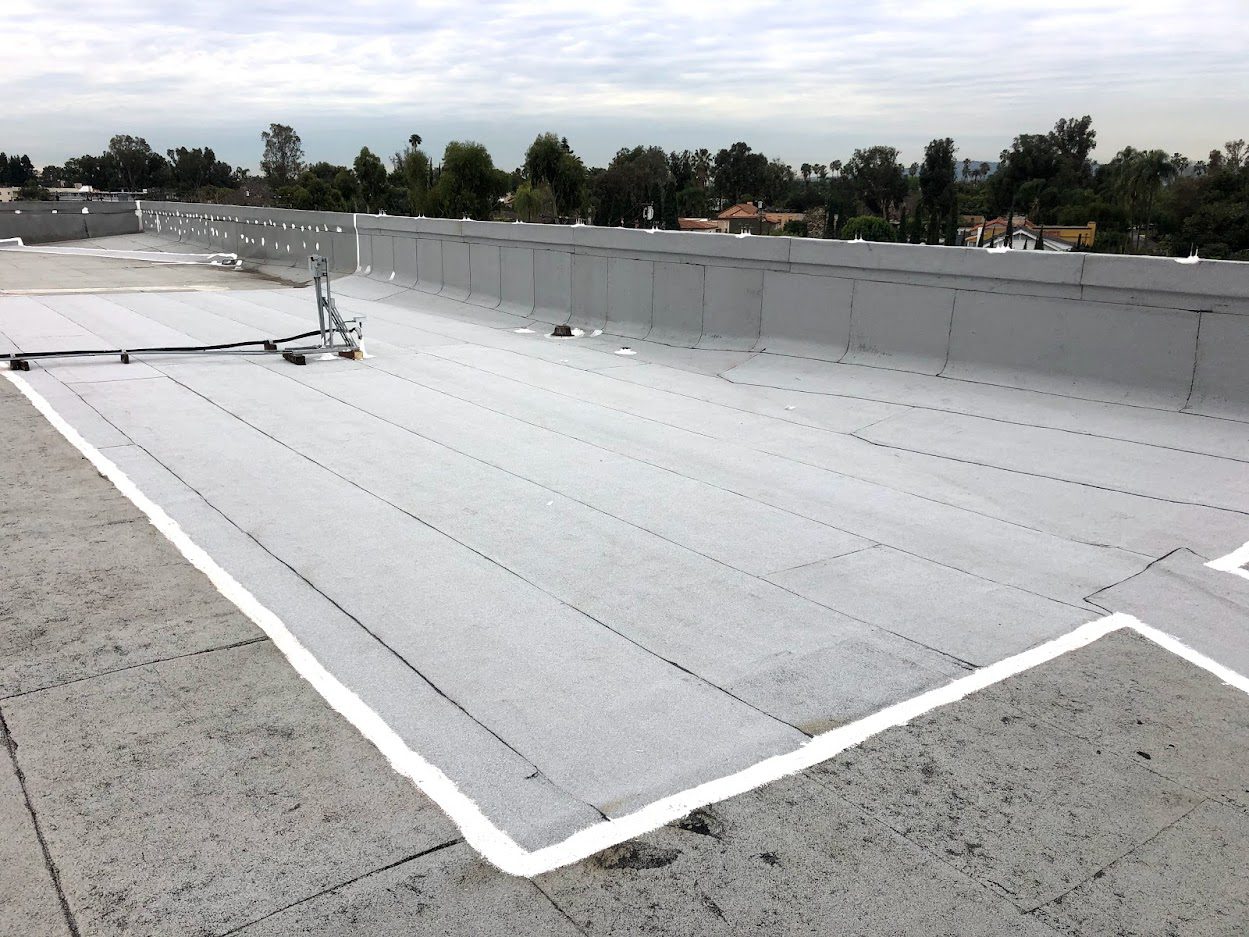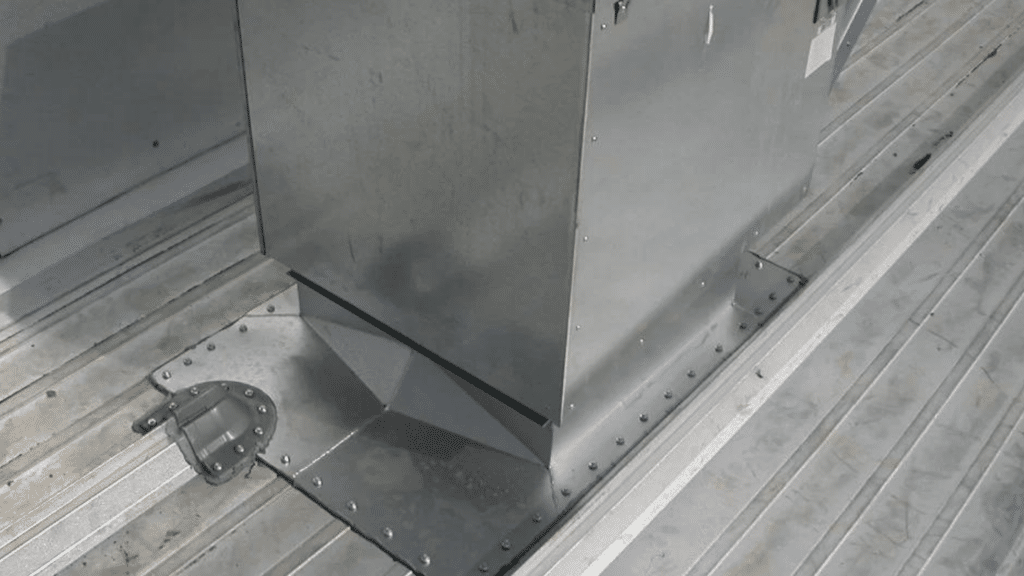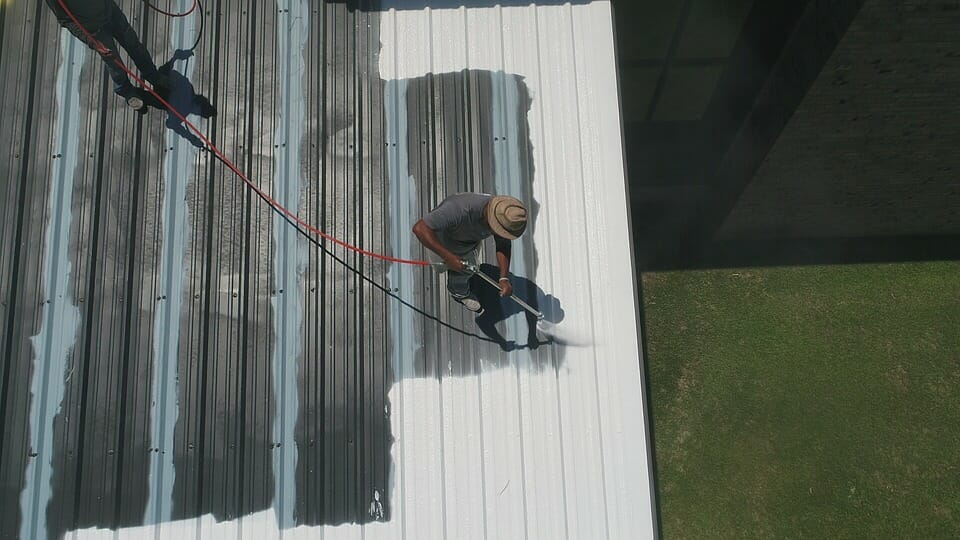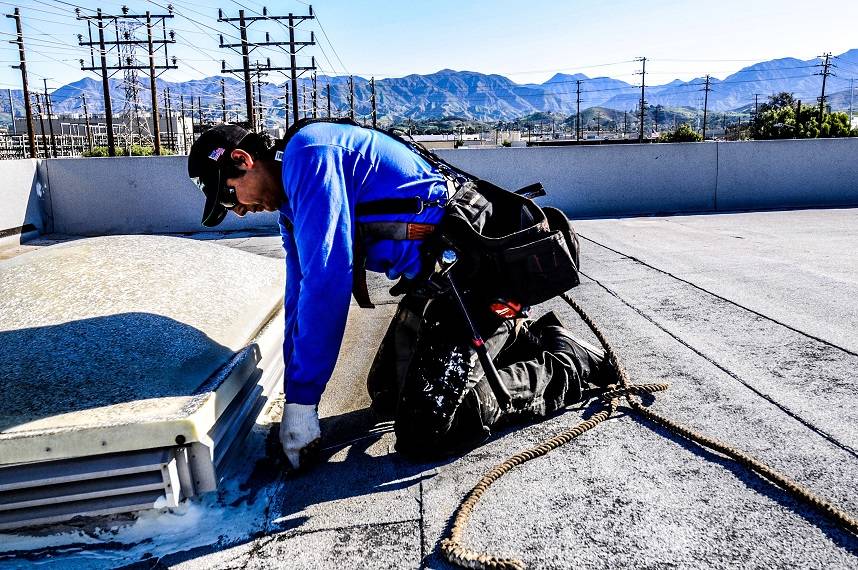Ponding happens after heavy rainfall or snow when the water starts getting collected in low roof areas. If neglected and not cleared out, it can lead to severe damage to the roof, causing breakage and leakage over time. The structural damage caused by ponding may even eventually become the reason for complete roof failure.
Therefore, finding ways to prevent ponding is the key before any such weather changes are expected. For instance, you can install hoppers to collect excess water or clear out the roof with automatic pumps. The best solution is to build up the low areas on your flat roof.
There is a high chance that your commercial flat roof has timbers that can rot and collapse if there is no air gap in between. A cold roof naturally becomes subject to collecting condensation, which leads to rotting timbers.
Therefore, the best way one can avoid this is to add an air gap when constructing the commercial flat roof between the underside of the deck as well as on top of the insulation area and for edges of the building to ventilate automatically.
This should go without saying for almost any commercial roof that regular drain, gutters, and scuppers cleaning are conducted to keep things flowing smoothly. The idea is to avoid unnecessary material lying over the roof and be conducive to damage.
If your drainage system is blocked because of debris, mud, trash, or other backups, it can leave standing water or snow on your roof that will, in turn, lead to the weakening of the roof. Many commercial building owners with flat roofs tend to invest in drainage cleaning 2-3 times annually. Addtionally, to get a better idea of what drainage systems are out there and a better understanding of drainage on flat roofs, check out our video.
-
Damage Control for Cracks
It is quite possible that due to severe weather that causes freeze and thaw conditions, you observe large cracks or ridges on your commercial flat roof. Moreover, poor craftsmanship while constructing the roof or regular surface stress can also cause cracks.
If the cracks are seemingly small, they can be fixed with regular maintenance checks through commercially available patch kits. However, unfortunately, if the cracks are big and run along the room seams and joints, then they cannot be fixed with regular maintenance and may require professional repairing by roofing experts.
Much like the surface of the human skin, blisters on a flat commercial roof surface occur when air and moisture are trapped between the roofing layers, separating them from one another and causing damage to the roof’s core membrane. As there is no way for the air or moisture to escape, a manual run-up is required to patch up the blister.
Make sure to check if the blisters have broken open or show signs of cracks that may increase with a severe blow. Suppose the blister is reducing lap coverage, and there is clear evidence of membrane deterioration. In that case, it is time to call up your roof repair expert as, consequently, your roof may need more work than you initially anticipated.
-
Removing Debris and Vegetation
A commercial flat roof is highly susceptible to collecting snow, debris and even being subjected to unusual vegetation growth. If left neglected, debris can become a major contributing spot for vegetation like trees and bushes.
Therefore, it is important that when on the run for a regular flat roof maintenance checkup, you make sure that nearby trees or other factors are not adding to debris on your roof. Make sure to clear out the roof from any leaves or branches that also add to debris and vegetation growth.
Bottom Line
Hopefully, these top maintenance tips for flat commercial roofs help you keep your roofs maintained for a long time. With proper maintenance, your flat roof should last 10-40 years. It obliviously depends on a number of factors with the weather in your area playing a huge factor. But if you live in Southern California and a commercial flat roof that is properly maintained your flat commercial roof should last you a very long time!




